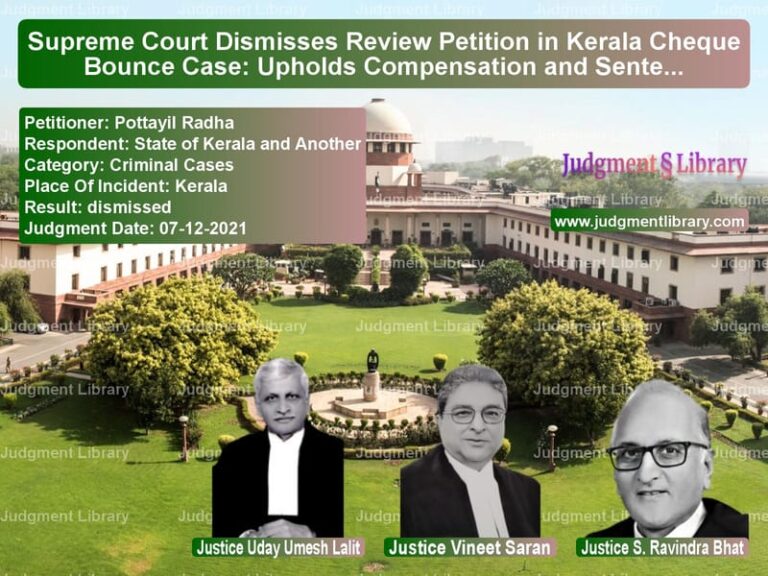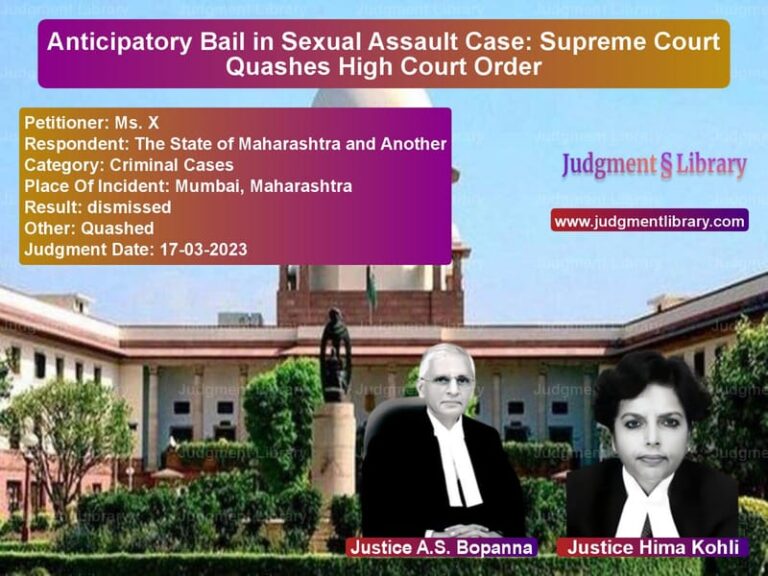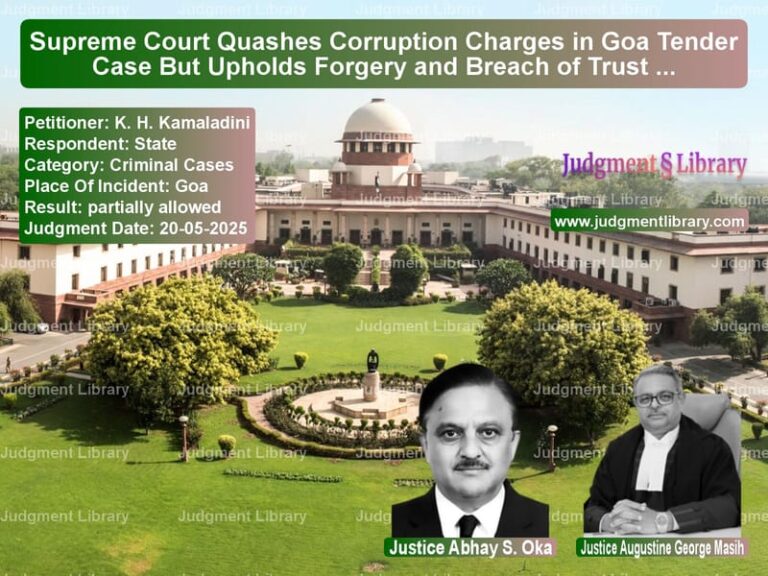Land Ceiling Dispute: Supreme Court Rules on Sub-Lessees’ Rights Under Government Leases
The case of Hardev Singh v. Prescribed Authority, Kashipur & Anr. and Jamaluddin & Ors. v. State of Uttarakhand & Ors. concerned disputes over land ceiling laws and whether sub-lessees of government-leased land could claim independent tenure rights. The Supreme Court ruled that sub-lessees under a government lease do not acquire the status of independent tenure holders unless conditions specified in the lease deed are met.
Background of the Case
The dispute arose under the Uttar Pradesh Imposition of Ceiling on Land Holdings Act, 1960 (Ceiling Act), which limits the amount of land a person or entity can hold. The appellant, Hardev Singh, was a sub-lessee of agricultural land, originally leased by the Secretary of State for India to one Lala Khushi Ram in 1920. After his demise, the leasehold rights passed to his successor, Harikishan Lal, who sub-let 2.49 acres of land to the appellant.
The government, under the Ceiling Act, declared a portion of the original lessee’s land as surplus. This included land that had been sub-leased to the appellant. Hardev Singh objected, arguing that as a sub-lessee, he was an independent tenure holder and his land should be assessed separately under the Ceiling Act.
Arguments of the Petitioner (Hardev Singh & Others)
- Under Section 3(17) of the Ceiling Act, sub-lessees qualify as tenure holders and should be assessed separately.
- The definition of ‘holding’ in Section 3(9) includes land held by a sub-lessee of a government lease.
- The lease deed allowed for sub-leasing in the ordinary course of agriculture, meaning the sub-lessee had a right to independent ownership.
- The government’s decision to club the sub-leased land with the original lessee’s holding was incorrect and violated the principles of natural justice.
Arguments of the Respondents (Government & Prescribed Authority)
- The appellant’s claim was based only on the definitions in the Ceiling Act but ignored the effect of Section 5, which determines actual ownership.
- The land was originally leased under the Government Grants Act, 1895, and the lease terms strictly governed how the land could be sub-let.
- Clause 9 of the lease deed specified that any transfer of land required approval and compliance with certain conditions, which had not been met.
- The appellant was an ‘ostensible holder’ and did not have independent tenure rights under the Ceiling Act.
Key Issues Considered by the Court
1. Whether a sub-lessee is a tenure holder under the Ceiling Act?
The Supreme Court analyzed the definitions of ‘holding’ and ‘tenure holder’ in Sections 3(9) and 3(17) of the Ceiling Act. While these definitions include government lessees and their sub-lessees, the Court ruled:
“A sub-lessee does not automatically become a tenure holder unless the terms of the lease deed specifically allow independent tenure rights.”
2. Impact of Government Grants Act on Lease Rights
The Court emphasized that government leases are governed by the Government Grants Act, 1895, which overrides state tenancy laws. The Supreme Court stated:
“The rights and obligations between the government and the grantee must be regulated by the terms of the original government grant.”
3. Compliance with Lease Deed Conditions
Clause 9 of the lease deed specified that transfers, including sub-leases, must comply with certain conditions. The Court ruled:
“Since the appellant did not meet the conditions outlined in the lease deed, the sub-lease did not create an independent tenure right.”
4. Burden of Proof on Sub-Lessee
Under Section 5 of the Ceiling Act, land held in someone’s name is presumed to be part of the main lease unless proven otherwise. The Court held:
“The appellant failed to prove that he was an independent tenure holder distinct from the original lessee.”
Final Judgment
The Supreme Court upheld the decision of the lower courts, dismissing the appeals. The key takeaways are:
- Sub-lessees of government-leased land do not automatically become independent tenure holders under the Ceiling Act.
- The Government Grants Act, 1895, overrides state tenancy laws and governs lease terms.
- A sub-lease for agricultural purposes does not create independent ownership rights unless the lease deed specifically permits it.
- The burden of proof is on the sub-lessee to show they hold land independently.
This ruling reaffirms that land ceiling laws must be applied in accordance with government lease terms and that sub-lessees cannot claim separate tenure rights without clear legal provisions.
Petitioner Name: Hardev Singh, Jamaluddin & Ors..Respondent Name: Prescribed Authority, Kashipur & State of Uttarakhand.Judgment By: Justice S. Abdul Nazeer, Justice Krishna Murari.Place Of Incident: Kashipur, Uttarakhand, India.Judgment Date: 10-01-2022.
Don’t miss out on the full details! Download the complete judgment in PDF format below and gain valuable insights instantly!
Download Judgment: hardev-singh,-jamalu-vs-prescribed-authority-supreme-court-of-india-judgment-dated-10-01-2022.pdf
Directly Download Judgment: Directly download this Judgment
See all petitions in Property Disputes
See all petitions in Landlord-Tenant Disputes
See all petitions in Contract Disputes
See all petitions in Specific Performance
See all petitions in Judgment by S. Abdul Nazeer
See all petitions in Judgment by Krishna Murari
See all petitions in dismissed
See all petitions in supreme court of India judgments January 2022
See all petitions in 2022 judgments
See all posts in Civil Cases Category
See all allowed petitions in Civil Cases Category
See all Dismissed petitions in Civil Cases Category
See all partially allowed petitions in Civil Cases Category







